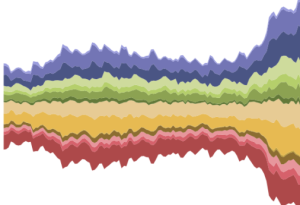
Anodot Gains Patents for Anomaly Detection

Anodot, which focuses on using machine learning techniques to spot anomalies in time-series data, announced a pair of U.S. patent awards this week covering its autonomous analytics framework.
The analytics vendor said Thursday (Oct. 11) it has been granted two U.S. patents for algorithms that allow users to apply machine learning-base anomaly detection. The algorithms are designed specifically to quickly identify the source of anomalies in large data sets, then perform root-cause analysis. The approach is promoted as faster than traditional business intelligence tools or dashboards.
The first patent award covers a method for identifying and analyzing data anomalies by comparing them with previous incidents to “determine their sensitivity,” the company said. Anodot trains its machine learning algorithms based on human behavior rather than using statistical analysis tools.
“By leveraging machine learning and artificial intelligence capabilities, we’re able to tap into human perception and identify business incidents that other BI tools would never find,” claimed Ira Cohen, Anodot’s co-founder and chief data scientist.
The second patent award is for an algorithm used to identify “seasonal trends,” including daily and weekly patterns that could be used to improve detection of data anomalies. Anodot said the technology can be used to provide autonomous analytics alerts to business customers as incidents are detected.
The analytics vendor also disclosed a pending U.S. patent application for an inference tool that could be used for root-cause analysis and real-time customer alerts. The technology is promoted as reducing the number of false positive alerts.
Indeed, a recent industry survey revealed that IT administrators are being overwhelmed by false alarms about anomalies and are seeking new ways to distinguish between actual and false operational alerts.
Anodot was launched in 2014 when its co-founders realized there was an unmet need for fast and accurate time-series analysis.
The company’s platform consists of a clustered software services application hosted on Linux servers in the cloud. Much of the application was built with open source software, including Cassandra, which is used as the real-time data store, and Kafka, which feeds data into the system. ElasticSearch is used to index data and power search, while a Hadoop cluster equipped with Hive and Spark engines is used for offline learning. Archival data is stored in Amazon Web Service’s S3 cloud service.
Recent items:
Inside Anodot’s Anomaly Detection System for Times-Series Data
AIOps Emerges as ‘Air Traffic Control’ for IT’



























